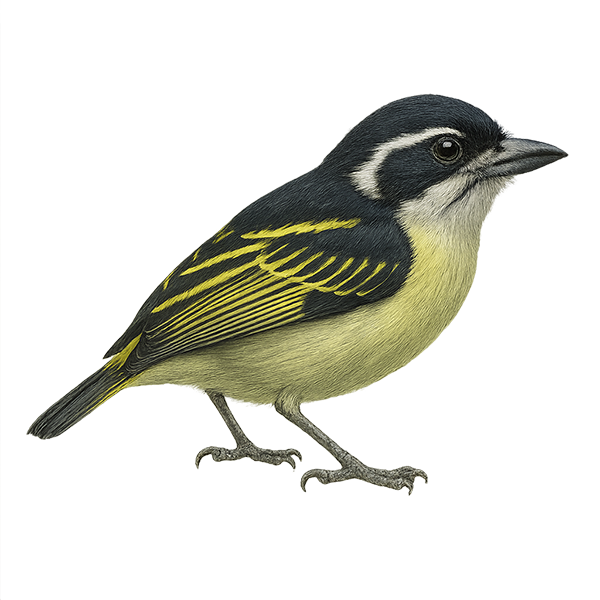Your wildlife photography guide.
Explore the yellow-rumped tinkerbird in detail, study its behavior, prepare your shots.
Where to observe and photograph the yellow-rumped tinkerbird in the wild
Learn where and when to spot the yellow-rumped tinkerbird in the wild, how to identify the species based on distinctive features, and what natural environments it inhabits. The WildlifePhotographer app offers tailored photography tips that reflect the yellow-rumped tinkerbird’s behavior, helping you capture better wildlife images. Explore the full species profile for key information including description, habitat, active periods, and approach techniques.
Yellow-rumped Tinkerbird
Scientific name: Pogoniulus bilineatus

IUCN Status: Least Concern
Family: LYBIIDAE
Group: Birds
Sensitivity to human approach: Suspicious
Minimum approach distance: 5 m
Courtship display: March to May
Incubation: 13-15 jours
Hatchings: March to June
Habitat:
tropical forests, gardens, plantations
Activity period :
Primarily active during the day, with peak activity in the morning and late afternoon.
Identification and description:
The Yellow-rumped Tinkerbird, Pogoniulus bilineatus, is a small, colorful bird from the Lybiidae family. It is primarily found in the tropical forests of sub-Saharan Africa, distinguished by its olive-green plumage and bright yellow belly. This tinkerbird is recognizable by its two distinct white bands on the head. It primarily feeds on fruits, but also catches insects with agility. Its song is a rapid, repetitive trill, often heard in the canopy. Although generally solitary, it can be seen in small family groups. Its ability to adapt to various habitats, including gardens and plantations, makes it a relatively common bird within its range.
Recommended lens:
400 mm – adjust based on distance, desired framing (portrait or habitat), and approach conditions.
Photography tips:
To photograph the Yellow-rumped Tinkerbird, choose sunny mornings when natural light highlights its bright colors. Use a 400mm lens or longer to capture precise details without disturbing the bird. Be patient and discreet, as this bird can be suspicious. Look for it in the forest canopy or in gardens where it feeds. A tripod can be useful to stabilize your camera during long observation sessions.
The WildlifePhotographer App is coming soon!
Be the first to explore the best nature spots, track rutting seasons, log your observations, and observe more wildlife.
Already 1 432 wildlife lovers subscribed worldwide

